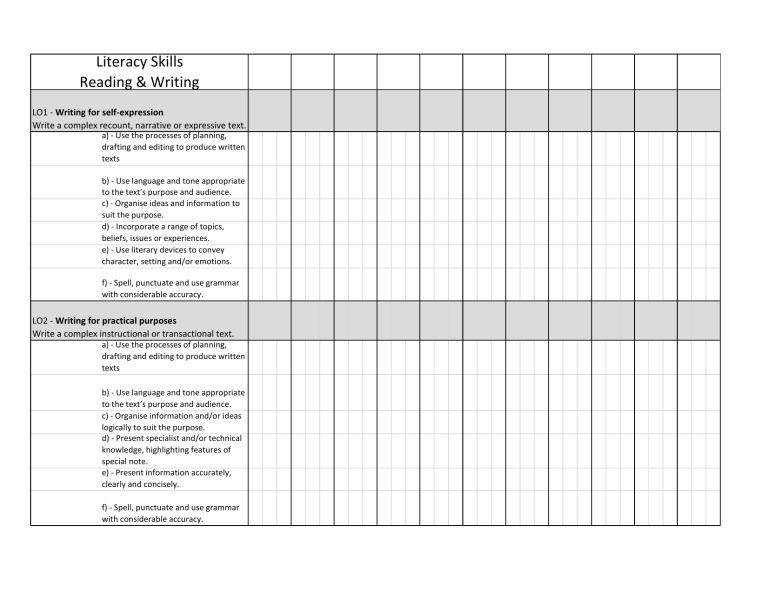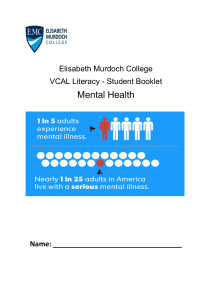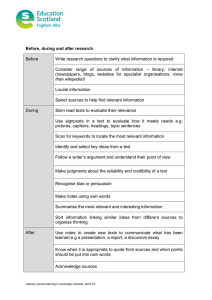
Literacy Skills Reading & Writing LO1 - Writing for self-expression Write a complex recount, narrative or expressive text. a) - Use the processes of planning, drafting and editing to produce written texts b) - Use language and tone appropriate to the text’s purpose and audience. c) - Organise ideas and information to suit the purpose. d) - Incorporate a range of topics, beliefs, issues or experiences. e) - Use literary devices to convey character, setting and/or emotions. f) - Spell, punctuate and use grammar with considerable accuracy. LO2 - Writing for practical purposes Write a complex instructional or transactional text. a) - Use the processes of planning, drafting and editing to produce written texts b) - Use language and tone appropriate to the text’s purpose and audience. c) - Organise information and/or ideas logically to suit the purpose. d) - Present specialist and/or technical knowledge, highlighting features of special note. e) - Present information accurately, clearly and concisely. f) - Spell, punctuate and use grammar with considerable accuracy. LO3 - Writing for knowledge Write a complex report, explanatory or expository text. a) - Use the processes of planning, drafting and editing to produce written texts. b) - Use language and tone appropriate to the text’s purpose and audience. c) - Sequence and structure information and ideas logically to suit the purpose. d) - Present a range of abstract concepts and/or technical facts within a specialist field. e) - Present information accurately, clearly and concisely. f) - Spell, punctuate and use grammar with considerable accuracy. LO 4 - Writing for public debate Write a complex persuasive, argumentative or discursive text. a) - Use the processes of planning, drafting and editing to produce written texts. b) - Use language and tone appropriate to the text’s purpose and audience. c) - Organise ideas and arguments to suit the purpose. d) - Provide and integrate evidence to support own argument. e) - In an argumentative or discursive text acknowledge and rebut opposing point(s) of view. f) - Spell, punctuate and use grammar with considerable accuracy. LO 5 - Reading for self-expression Demonstrate that meaning has been gained from reading a complex, sustained narrative, recount or expressive text. a) - Identify the purpose of the text, including any inferred purpose and the means used to achieve the purpose. b) - Identify the fundamental point of view shaping the text and the devices used to present that point of view (for example, characters). c) - Compare and contrast with other texts. d) - Present an opinion on the text, taking into account the content and its effectiveness in relation to the audience and purpose. LO 6 - Reading for practical purposes Demonstrate that meaning has been gained from reading a complex, sustained instructional or transactional text. a) - Identify the purpose of the text, including any inferred purpose and the means used to achieve the purpose. b) - Identify the key instructions and any interpretations. c) - Identify (if any) misleading information in the text. d) - Compare and contrast with other known texts. e) - Present an opinion on the text, taking into account the content and its effectiveness in relation to the audience and purpose. LO 7 - Reading for knowledge Demonstrate that meaning has been gained from reading a complex, sustained report, explanatory, expository or informative text. a) - Identify the purpose of the text, including any inferred purpose and the means used to achieve the purpose. b) - Differentiate between information and interpretation in the text. c) - Extract information relevant to given research task. d) - Compare and contrast with other texts e) - Analyse the conclusions reached. f) - Present an opinion on the content and effectiveness of the text in relation to the audience and purpose. LO 8 - Reading for public debate Demonstrate that meaning has been gained from reading a complex, sustained persuasive, argumentative or discursive text. a) - Identify the purpose of the text, including any inferred purpose and the means used to achieve the purpose. b) - Identify the underlying values system implicit in the text. c) - Compare and contrast with other texts. d) - Evaluate the arguments and evidence given. e) - Present an opinion on the text, taking into account the content and the effectiveness of the text in relation to the audience and purpose.




